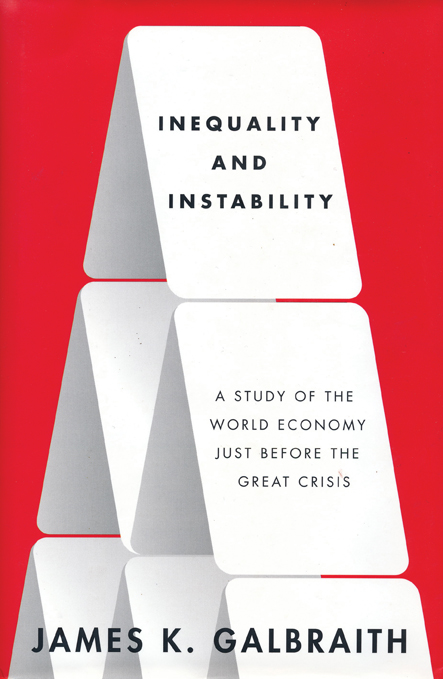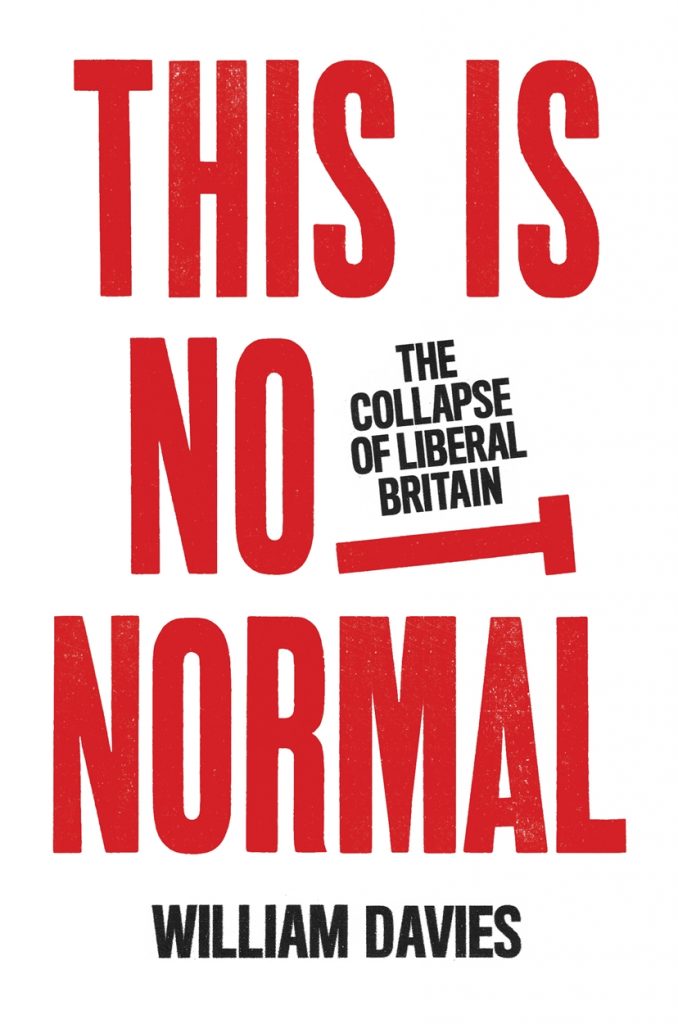 Inequality is a charged topic. Professional macroeconomists have generally taken little interest in inequality taking the traditional economic view that the economy will stabilise itself at full employment. Instead of measuring inequality as traditionally done, by country, author James Galbraith insists that to understand real differences that have real effects, inequality must be examined through both smaller and larger administrative units. Imani Perry is impressed by Galbraith’s new methodological approaches which boldly bring the problem of radical inequality to the fore but notes he fails to take into account some relevant variables like race.
Inequality is a charged topic. Professional macroeconomists have generally taken little interest in inequality taking the traditional economic view that the economy will stabilise itself at full employment. Instead of measuring inequality as traditionally done, by country, author James Galbraith insists that to understand real differences that have real effects, inequality must be examined through both smaller and larger administrative units. Imani Perry is impressed by Galbraith’s new methodological approaches which boldly bring the problem of radical inequality to the fore but notes he fails to take into account some relevant variables like race.

Inequality and Instability: A Study of the World Economy Just Before the Crisis. James K. Galbraith. Oxford University Press USA. May 2012.
James Galbraith’s book, Inequality and Instability: A Study of the World Economy Just Before the Crisis, is an astoundingly broad, illuminating, and detailed examination of the global rise in income inequality between 1980 to the dawn of the financial crisis in 2008. He reveals the relationship that exists between income inequality and economic instability, and in the process makes a compelling argument that the means by which we examine inequality must become more rigorous. Throughout, he challenges conventional economic wisdom, and popular economic truisms, through expanded data sets, new methodological approaches to measuring inequality, and the reconsideration and revitalization of older yet still apt mid 20th century economic formulae and theories.
In short, the argument he proffers is that the growth in inequality of income across the globe is driven by the behaviour of capital markets, rising stock prices, and means of asset valuation. It is produced by the combination of growth in certain economic sectors where high incomes are earned at the top echelon, and the increasing and increasingly vulnerable demand for credit among those lower on the economic totem pole in response to the growth in inequality. Interests rate, flow of investments and the cycle of payments on debts, are all impacted, creating a dynamic international landscape in which inequality and instability grow in tandem.
Galbraith accepts that inequality is an unavoidable feature of economic life, but argues that we must consider the question of how much is too much. His normative assertion — in most of the world inequality is too high — is supported by his observation that across the globe increasing inequality operates as a warning sign that “untoward developments may be on the horizon.”
Galbraith develops previously unchartered measures of economic inequality using a wide range of new data sets. He makes them work together because they have structural similarities, even if they are not measuring precisely the same “thing.” For example, he pushes beyond using the nation state as the unit of analysis in all instances, because often that is not the unit that allows us to best see how much inequality exists and where. He uses region as a unit of analysis in Europe and China, and individual States in the United States, but he also examines the transnational flows of job seekers and capital (this is particularly important in Europe) and explores the dynamic relationship between regions and states. Additionally, he distinguishes between pay and income as measures of the evaluation of inequality (noting that income is the more revealing measure), and he tracks the relationship between rates of employment and rates of inequality across economic sectors and locales.
A finding that will be surprising to many is that greater inequality increases rather than diminishes unemployment. In this instance and others he lays to rest a number of common assumptions about global capitalism. For example: The idea that skill bias is at the root of inequality in the United States has minimal evidentiary support according to Galbraith. It is not the fact that too few people have the right skills that accounts for inequality, he argues, but rather inequality results from the way income is distributed to those at the high end of the income level.
In his comparison between the United States and Europe, he challenges the conventional wisdom that lower unemployment in the U.S. is a result of greater wage flexibility. Many economists have argued that in contrasting models of the welfare state and regulation of employment markets, the U.S. chose efficiency while Europe pursued greater economic equality and this lead to the unemployment crises in Europe. Galbraith says this is simply incorrect. Because his analysis takes into account how employment markets in Europe are transnational, (i.e. people travel outside home nation to seek employment) what is revealed is that pay inequality is actually higher in Europe than in the United States. To achieve greater employment, he argues, interregional pay inequities in Europe must be reduced.
By identifying inequality as a problem produced at the top, rather than the bottom, many assumptions made on behalf of the public, and indeed many assumptions validated by economists, fly out the window. Case in point, despite employees anxieties in wealthy nations there is little evidence for the view that rising international trade and competition from low-wage countries have played a role in inequality, because wage inequality has not been the subject of dramatic expansion in inequality in these nations, but rather the expansion has come in the form of non wage-based income inequality (which includes the stock benefits of those at the top.) This has potentially dramatic implications for every day political engagement. In popular politics, narratives about international labour market competition have a great deal of traction with the working and middle classes. Galbraith’s lens, however, suggests voters ought to look up, instead of overseas, if we’re worried about getting our fair share of the national pie.
Perhaps most dramatically, Galbraith contravenes the argument that democracies necessarily tend to be egalitarian in comparison to authoritarian and dictatorial regimes. He argues that this is only true in the case of stable social democracies, and most political democracies are not social democracies. In a close analysis and comparison of Brazil and Argentina, he makes this point quite convincingly. Brazil has become stable sooner than Argentina, largely due to the Brazilian government orienting itself towards social need and adjustable currency years before Argentina, even as they both retreated from neoliberalism.
In examinations of China and Cuba, Galbraith shows how even countries that are committed ideologically to the principle of minimal inequality are impacted by global finance markets. In the context of China, the rise of the wealthy coastal zone that is deeply integrated with the world economy lies in dramatic contrast to the interior of the nation. Much higher incomes in banking, finance, and information technology in the coastal zones, and the housing book in major cities, have heightened inequality in the intentionally harmonious society. In Cuba, the fact that the informal economy (with the influx of the U.S. dollar) is more robust than the formal economy, along with the increasing reliance upon tourism has led to new forms of regionally driven inequality, notwithstanding the remarkable resilience of the communist country throughout the special period and into the current era.
Without ever saying so explicitly, Galbraith effectively turns our attention away from the lingering, ideologically driven, Cold War patterns of evaluating political economies as capitalist vs. socialist/communist. Global interdependence is undeniable. Within the constraints of the world of global capitalism, individual nations choose policies that have implications for the health of their people. Galbraith argues, quite compellingly, that those policies that attempt to reduce or mediate inequality lead to better outcomes, even though we must recognize that some inequality will persist. At the same time, the book effectively reminds us that no nation is an island, and our economic and political sensibilities ought to be cultivated by attention to dynamic interactions across the globe.
Though this book may prove a challenging read for who have limited familiarity with economic analysis it is quite useful for any who think seriously about the question of inequality. At some points, however, it is surprising that a writer who is so thorough in so many respects, fails to include certain points of analysis. For example his examination of inequality and voting patterns in the United States includes a discussion of the deep South that doesn’t include race as a relevant variable. Given the history of how race categorization has trumped class identity for white voters in the United States, and the effective operation of the Southern strategy since the mid-late 20th century, we cannot simply read the political interests of poor white Southern voters according to class. Moreover, given how employment sectors, real estate, and the welfare state have been explicitly and deliberately racialised throughout U.S. history, we know inequality has been and continues to be produced by race and racism.
Galbraith also doesn’t offer an account for how the perennially unemployed non-job seekers fit into his measure of inequality, nor does he speculate how undocumented immigrant populations, or any group whose compensation is routinely unreported are part of the picture of inequality. That said, the modes of analysis Galbraith employs are incredibly relevant to these areas of inquiry and he challenges scholars to pursue both a deeper and broader examination of inequality. In sum, Galbraith boldly brings the problem of radical inequality from the margins to the centre of economic analysis.
——————————————————–
Imani Perry is a Professor at the Center for African American Studies at Princeton University. Imani is an interdisciplinary scholar who studies race and African American culture using the tools provided by various disciplines including: law, literary and cultural studies, music, and the social sciences. She has published numerous articles in the areas of law, cultural studies, and African American studies, many of which are available for download at: imaniperry.typepad.com. She also wrote the notes and introduction to the Barnes and Nobles Classics edition of the Narrative of Sojourner Truth. Professor Perry teaches interdisciplinary courses that train students to use multiple methodologies to investigate African American experience and culture. You can find her on Twitter @imaniperry. Read more reviews from Imani.








1 Comments